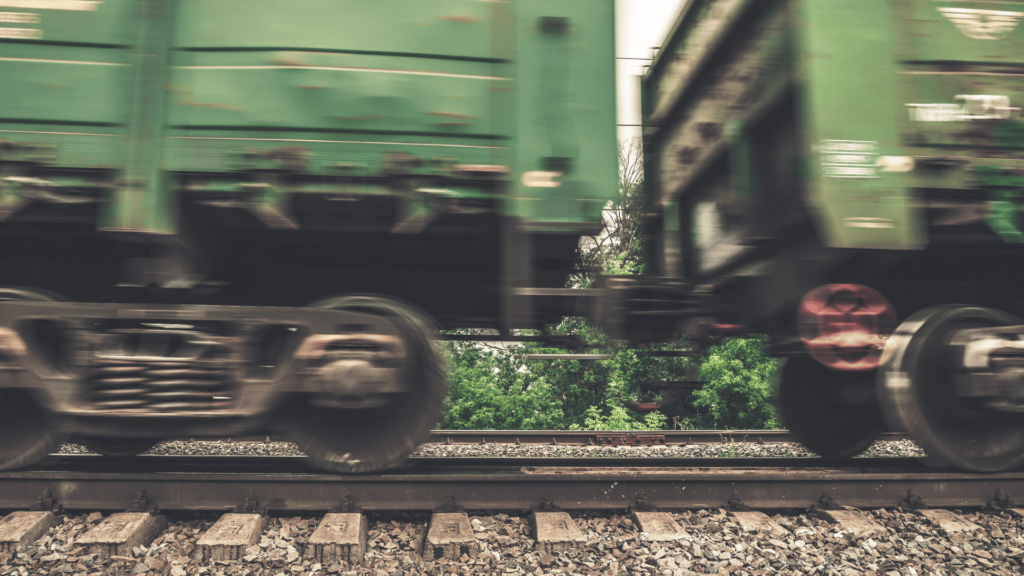Telematics Have Huge Potential, and One Big Problem

It has been fascinating to watch the railroads dabble in telematics. For an industry that prides itself on making cutting-edge investments to improve operations, it’s astonishing that they continue to run on AEI tag readers, a system that has been in place for 32 years. Now we are seeing some railroads touting a next generation technology, telematics through RailPulse, to replace that system. Unfortunately, many of the limitations of the current regime look like they will be repeated.
Great Promise
GPS and other monitoring devices on railcars, as Byron Porter so eloquently argues, could significantly improve the carriers’ ability to recognize car-related component problems, including failing bearings. Through regular monitoring and early detection, it would be possible to reduce the number of derailments and incidents like what occurred in East Palestine. Widespread adoption to help make rail safer and maintenance more efficient is a worthy goal.
This is not the telematics application that gets the most airtime. Most discussion is around improving collaboration and supply chain performance – topics that generate a lot of excitement, but gloss over a critical issue.
That is: who owns and controls the data?
Like the current AEI system, who owns the data and whether non-owners can access and use the data, could be the key factor in limiting real improvements in collaboration and supply chain performance.
Missing Potential
Currently, data generated from AEI tags are available only to equipment owners, shippers, carriers, and others who are party to the waybill. To gain access to the information, one needs a Letter of Authorization (LOA) from an entity that is a party to the waybill. Without an LOA, Railinc, which essentially has a monopoly on the data, limits access.
If the output of the telematics data follows the same trajectory as AEI data, we can expect a couple of likely outcomes:
- Data will be siloed in ownership
- Data will be largely controlled by a single entity and treated as confidential
Instead of being accessible to more stakeholders and being applied across the network, data will be limited, and so will the potential for broader supply chain improvements.
Shippers want to use car tracking to get more accurate ETA information and to make good decisions about the route and timing of the next shipment. That requires a different approach to data sharing and breaking out of data silos. Creating useful predictive models will require aggregating data over many devices with different ownership. Real-time GPS pings on a shipper’s small number of cars won’t solve that problem.
Even if a different approach to telematics was embraced, we’d still be looking at a very long horizon before shippers would see a benefit for things they really care about, like accurate ETAs.
That’s because of high costs and a long implementation timeline. With 1.6 million railcars and a conservative device cost of $3,000 each, the equipment will cost more than $4 billion. In addition to the high device costs, it will take a dozen years to implement the system. Meanwhile, traffic will continue to leave the rail network due to poor service and communication, and an inability to “get arrival news” even if it’s bad news.
With telematics on each car, a rail customer will know the location of their car with more precision than they have today. This is a leap forward. However, with only better information on their own cars, rail customers will still know nothing about rail network performance on the rest of the route to destination and they will know nothing about the current route condition when they are planning the next shipment.
Without visibility into current network performance and conditions, the useful data to accurately calculate ETAs and make important decisions about shipment plans will always be out of reach.
Luckily, that network understanding will not take billions of dollars and more than a decade to achieve.
A Real Opportunity
By zooming out and focusing on the performance of the network, not just on the performance of individual railcars, a different perspective takes hold. One captures a broader understanding of the supply chain and the factors that impact a shipper’s cars.
This is what we’re focused on at RailState. We place sensors at strategic locations on the rail network to track train movements, so shippers can easily see all trains and cars moving over the network as well as the speeds that they are moving enroute. They see network conditions before they ship a car, schedule an unloading crew, or make a promise to a customer. Subscribers would own the data and the data history. Moreover, this network provides information not only on their cars, but on everyone else’s. Imagine how the conversation with a carrier changes when a shipper knows how their traffic is being treated relative to other traffic over the same route.
I would modify Byron’s statement about the network effects of car visibility: “you don’t gain the value until a critical mass of railcars are equipped with GPS.” You gain the value of better supply chain performance when people make decisions with visibility into what is happening on the rail network now. You don’t have to equip every railcar with GPS to achieve this network visibility. RailState is fully operational across Canada and parts of the US, providing shippers with the insights you can only get from a full network view.
If you’re a shipper looking to benefit now and not have to wait 10+ years to maybe see some changes, let’s talk.
